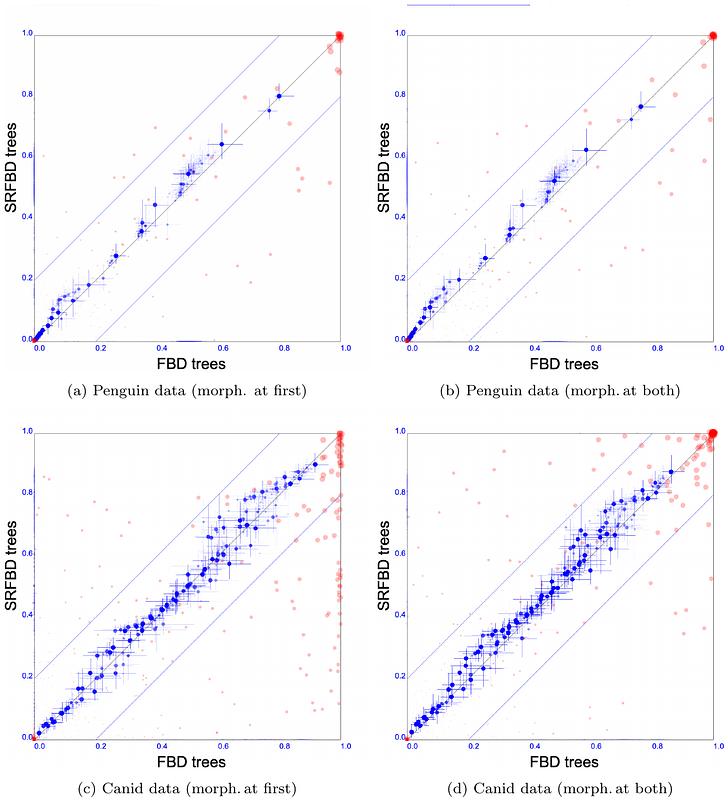Enhancing Evolutionary Timelines: The Impact of Stratigraphic Range Information on Phylogenetic Inference

Enhancing Evolutionary Timelines: The Impact of Stratigraphic Range Information on Phylogenetic Inference
Stolz, U.; Gavryushkina, A.; Vaughan, T. G.; Stadler, T.; Allen, B. J.
AbstractCoherent phylogenetic analyses of molecular and fossil datasets have deepened our understanding of evolutionary biology. A core model facilitating such coherent analyses is the fossilised birth-death (FBD) model which directly incorporates fossils within phylogenetic trees. However, a limitation of the FBD model is that it cannot assign multiple fossil occurrences of the same species, limiting our ability to accurately represent age information for species which have been sampled repeatedly. To address this gap, the Stratigraphic Ranges Fossilized Birth-Death (SRFBD) model has recently been introduced. This model can account for sampled stratigraphic ranges and integrate over occurrences within the range, enabling us to include more complete fossil age information within the inference. Here, building upon this mathematical work, we develop a computational method making the model accessible to the community, for more accurate total-evidence inference of dated phylogenetic trees and evolutionary parameters. In particular, we integrate the SRFBD model into BEAST2, facilitating the use of a diverse array of genomic substitution models and the inclusion of both morphological and molecular data when inferring phylogenies. We present a thorough validation of the SRFBD implementation against simulated data. We then demonstrate the differences in posterior parameter estimates and phylogenies when applying FBD and SRFBD models to two example datasets, the Spheniscidae (penguins) and the Canidae (dogs). In both examples, the SRFBD model produces older divergence times, lower diversification and turnover rates, and considerably higher sampling proportions compared to FBD model.